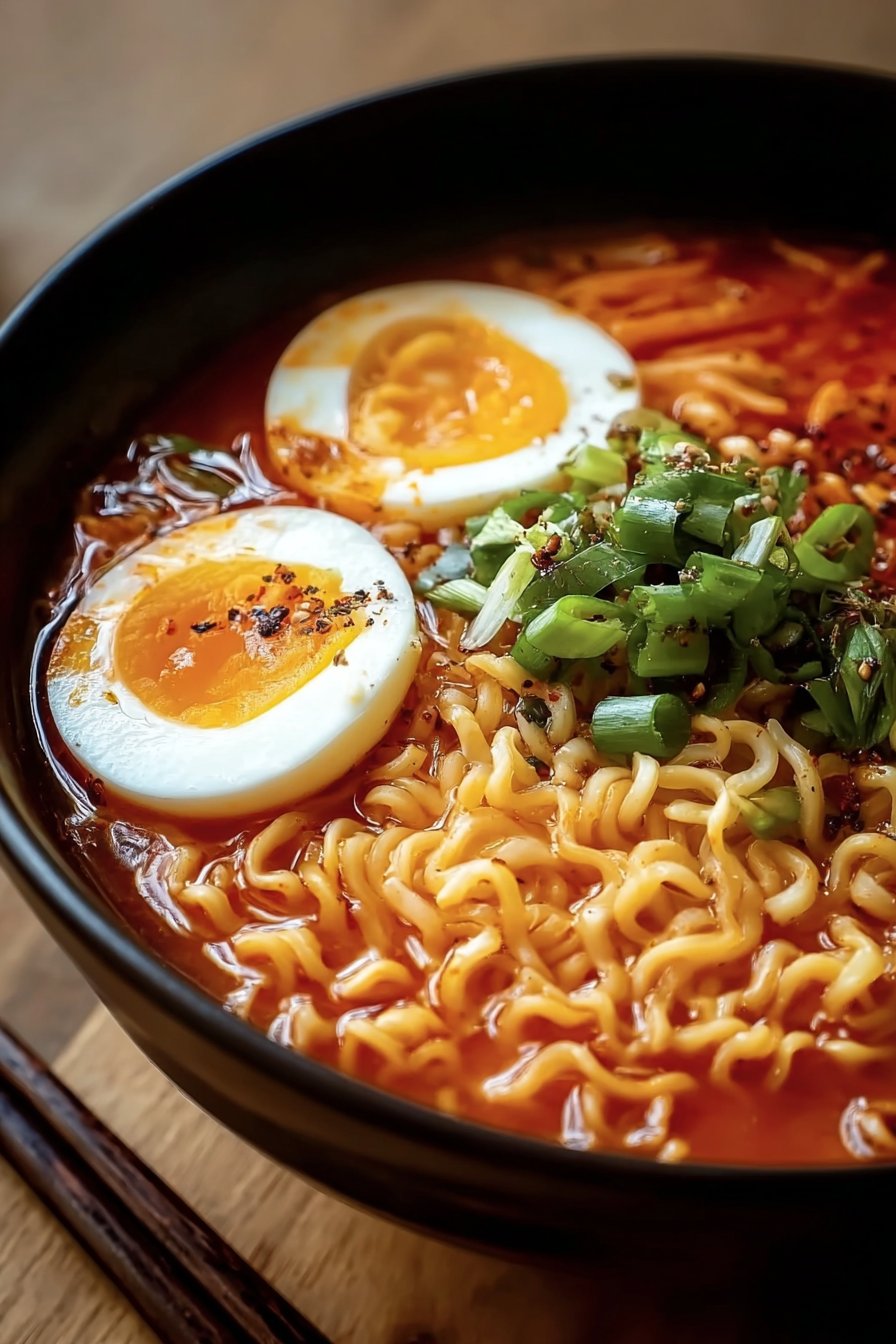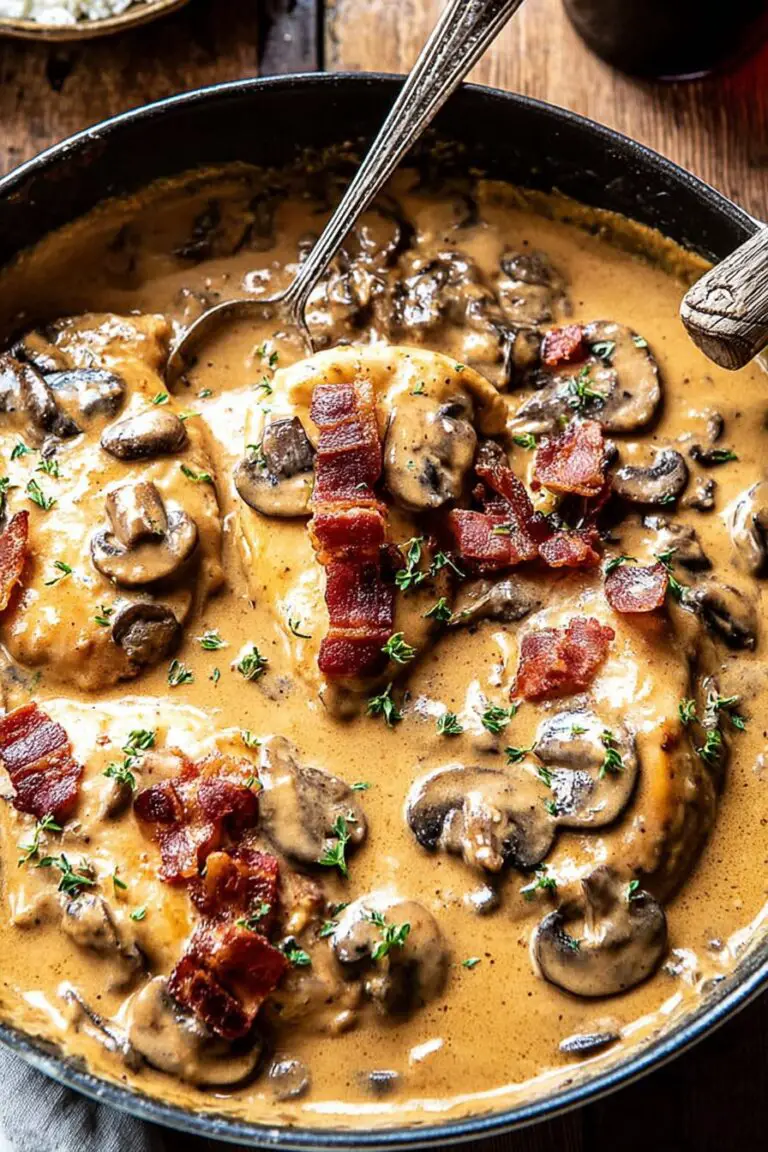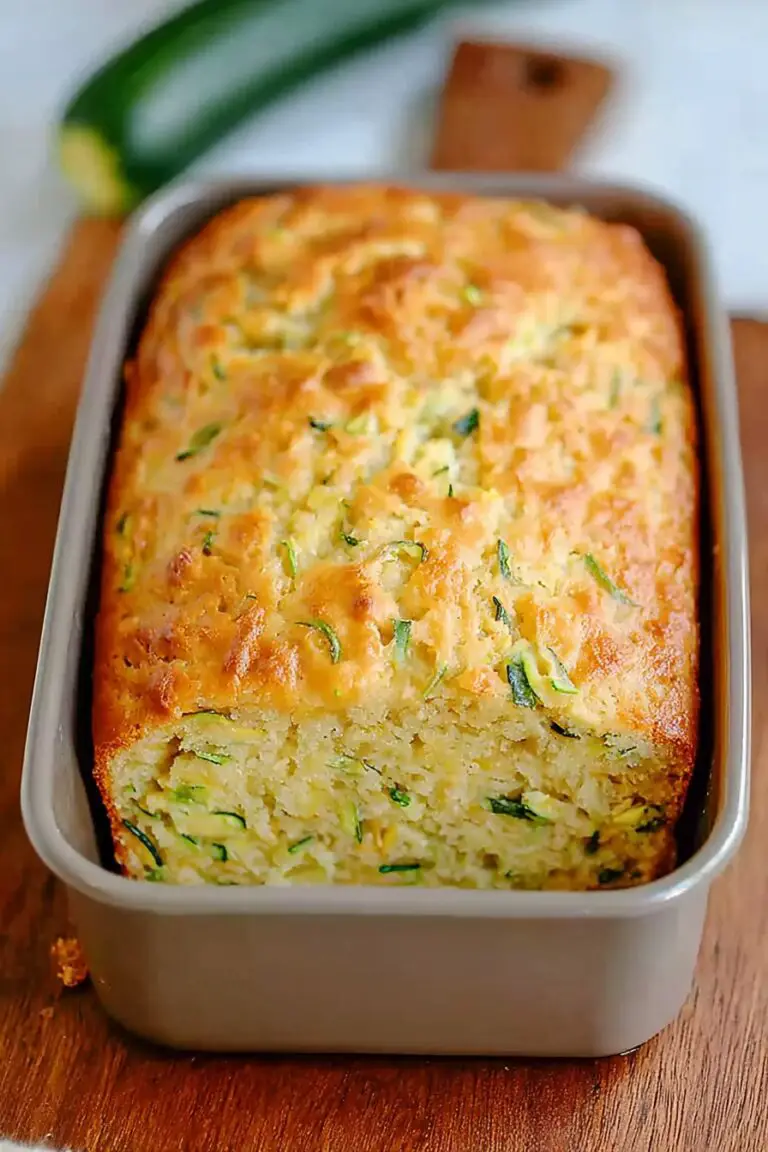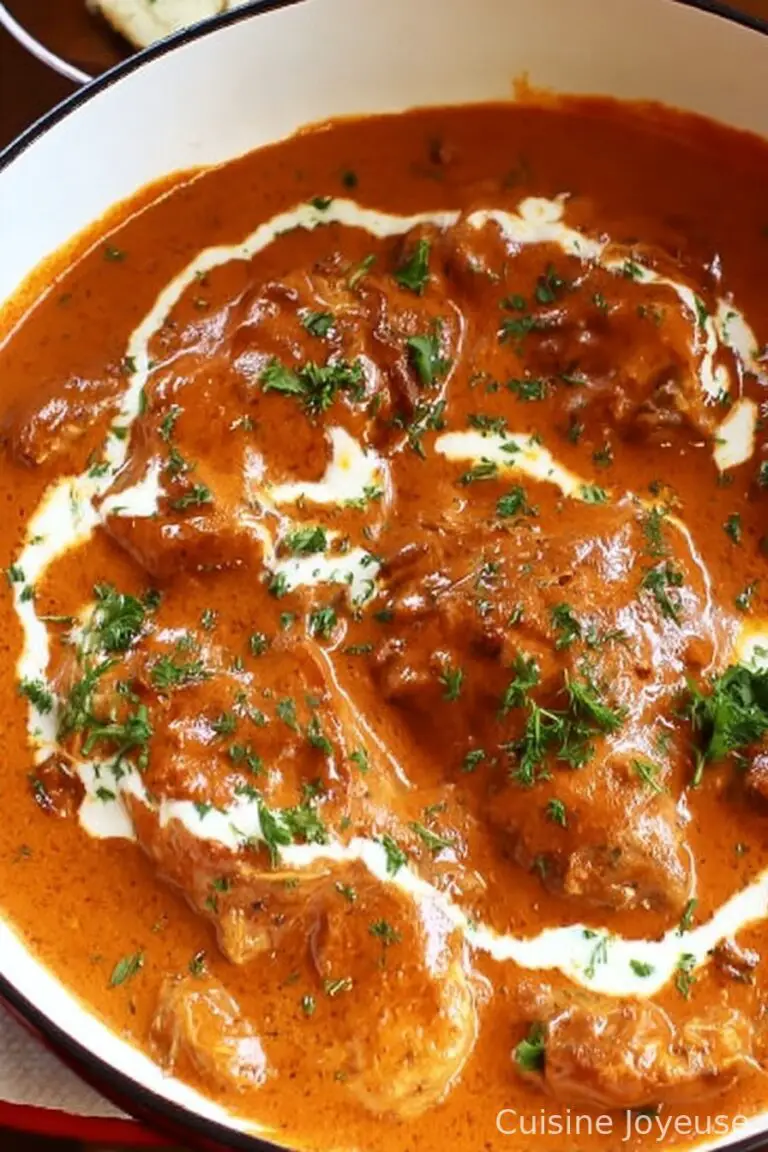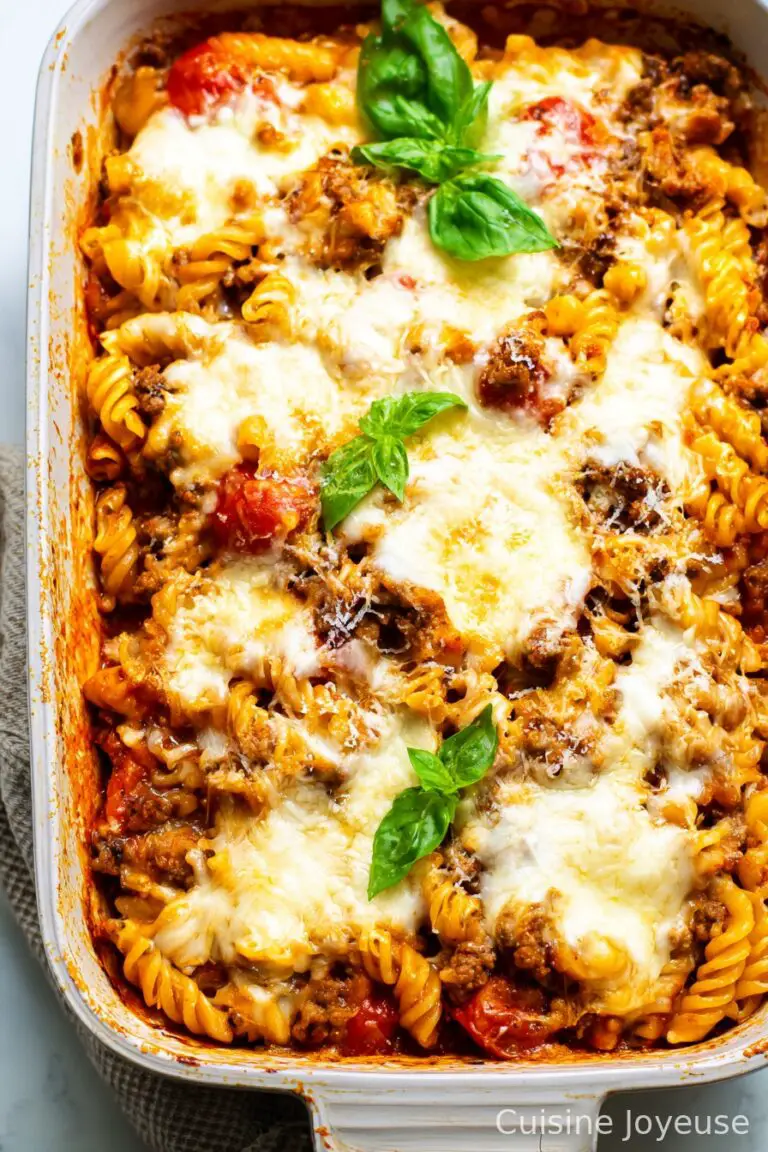Creamy Korean Spicy Ramen
Let Me Tell You About This Ramen (It’s Been a Journey!)
Okay, so you know those days where you’re just wiped out, and all you want is something spicy, creamy, and totally comforting? That’s where this “Creamy Korean Spicy Ramen” comes in. I got hooked on this dish back in college—my roommate Jin used to make a version that honestly saved me from a lot of sad instant noodles (no offense, Maruchan, but you know what you did). One night, we couldn’t find half the ingredients and just started tossing stuff in the pot. The result? Magic. Well, almost. There was one time I used too much gochujang and had to eat yogurt for dessert just to put out the fire, but that’s another story!
Why I Keep Making (and Eating) This
I make this when I want dinner on the table in, like, twenty minutes, but it still has to taste like I put in some effort. My family goes crazy for this because it’s creamy enough to feel indulgent, but the spice wakes up your taste buds (great for when you can barely keep your eyes open). Actually, my partner always jokes that I make this extra spicy just so I’ll have leftovers, but the joke’s on me—there’s never any left. Also, it’s a great excuse for using up that last bit of cheese in the fridge that’s not quite enough for a sandwich.
What You’ll Need (Substitutions = Sanity)
- 1 pack Korean instant ramen (I usually grab Shin Ramyeon, but honestly any spicy kind works—once used a random brand from H Mart, still delish)
- 2 cups water (give or take; I never actually measure, just eyeball it and hope for the best)
- 1/2 cup milk (whole is best, but I’ve used oat milk in a pinch. My grandmother swore by evaporated milk, not kidding.)
- 1 tablespoon gochujang (Korean chili paste; Ssamjang works if you’re desperate, but it’s a bit different)
- 1 teaspoon soy sauce (sometimes I do a big splash because I like it salty, oop)
- 1/2 teaspoon sugar (I’m not above using honey)
- 1 green onion, sliced (optional, but highly recommended for color and crunch)
- 1 egg (if you’re feeling fancy or need protein—sometimes I drop it in, sometimes I forget entirely)
- 1/4 cup shredded cheese (mozzarella melts best, but cheddar is fine, or whatever’s lurking in your fridge)
- Sesame seeds and/or a drizzle of sesame oil (optional, but so good)
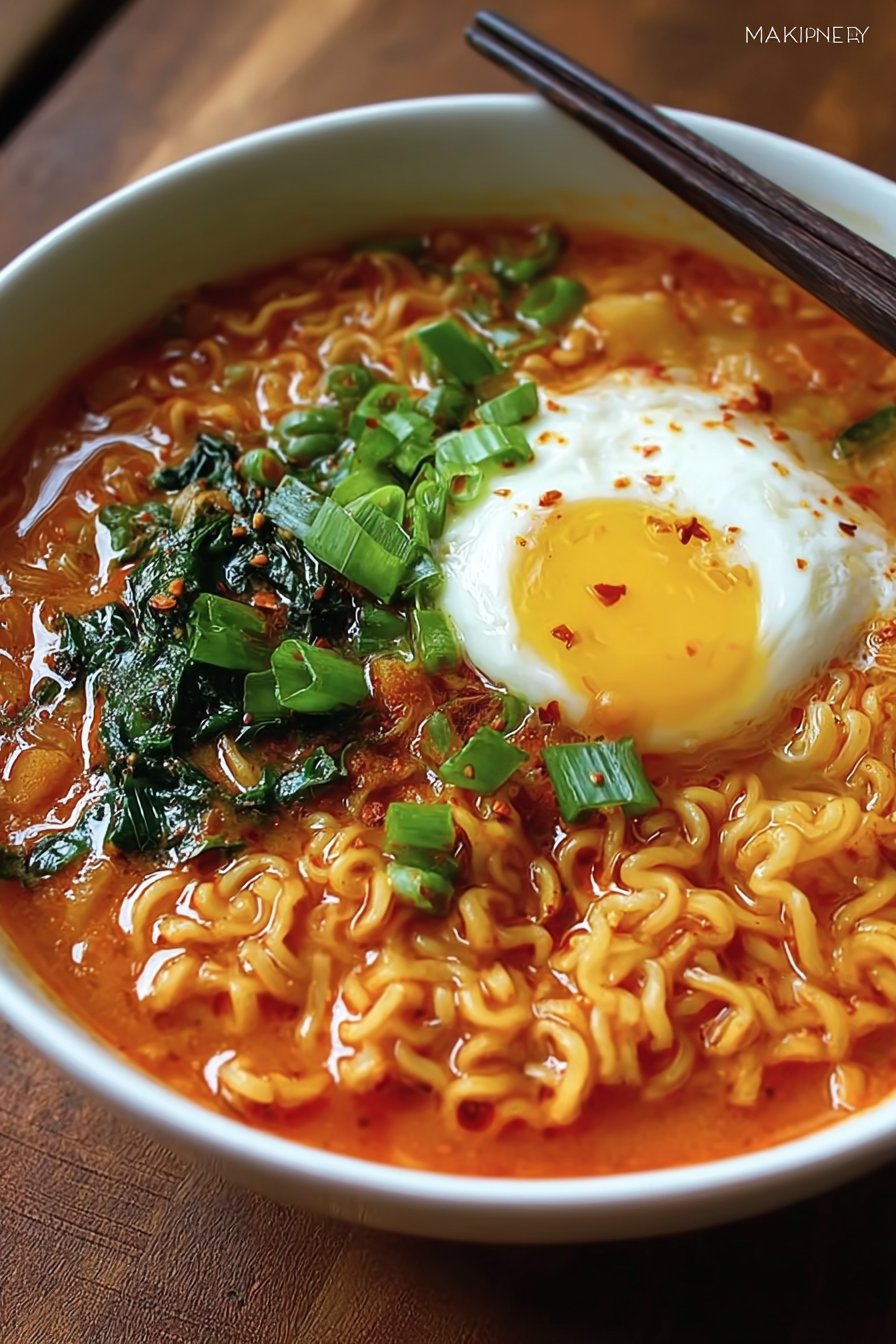
How I Make It (aka, Controlled Chaos)
- Bring your water to a gentle boil in a small pot. I usually use my trusty saucepan, but once had to use a frying pan (it worked, just took longer… don’t ask).
- Toss in the ramen noodles and let them do their thing for about 2 minutes, just until they start breaking up. Don’t wander off! These things cook fast.
- Stir in the soup base packet (from your ramen pack), gochujang, soy sauce, and sugar. If you’re feeling wild, add a squeeze of Sriracha too—I won’t judge.
- Now lower the heat and pour in your milk. This is where I usually sneak a taste (just to make sure I didn’t go overboard on the gochujang, which…happens).
- If using, crack that egg right in and let it poach gently in the soup—don’t stir too much or you’ll get egg ribbons (unless you like that, which honestly is fine!).
- Toss in the cheese and let it get all melty. It might look a bit weird at this stage, kinda like orange lava. Trust the process.
- Once the noodles are as soft (or al dente) as you want, turn off the heat, stir in your green onions and a sprinkle of sesame seeds or oil. Serve hot—slurp extra loud for maximum enjoyment.
Some Notes Worth Mentioning
- Sometimes the cheese clumps a bit. I used to think I’d ruined it, but actually, those gooey bites are the best part.
- If you use non-dairy milk, just avoid anything too sweet (looking at you, vanilla almond milk… that was not a good day).
- Soup gets spicier the longer it sits. I think this tastes even better the next day, but, um, I’ve never made it last that long.
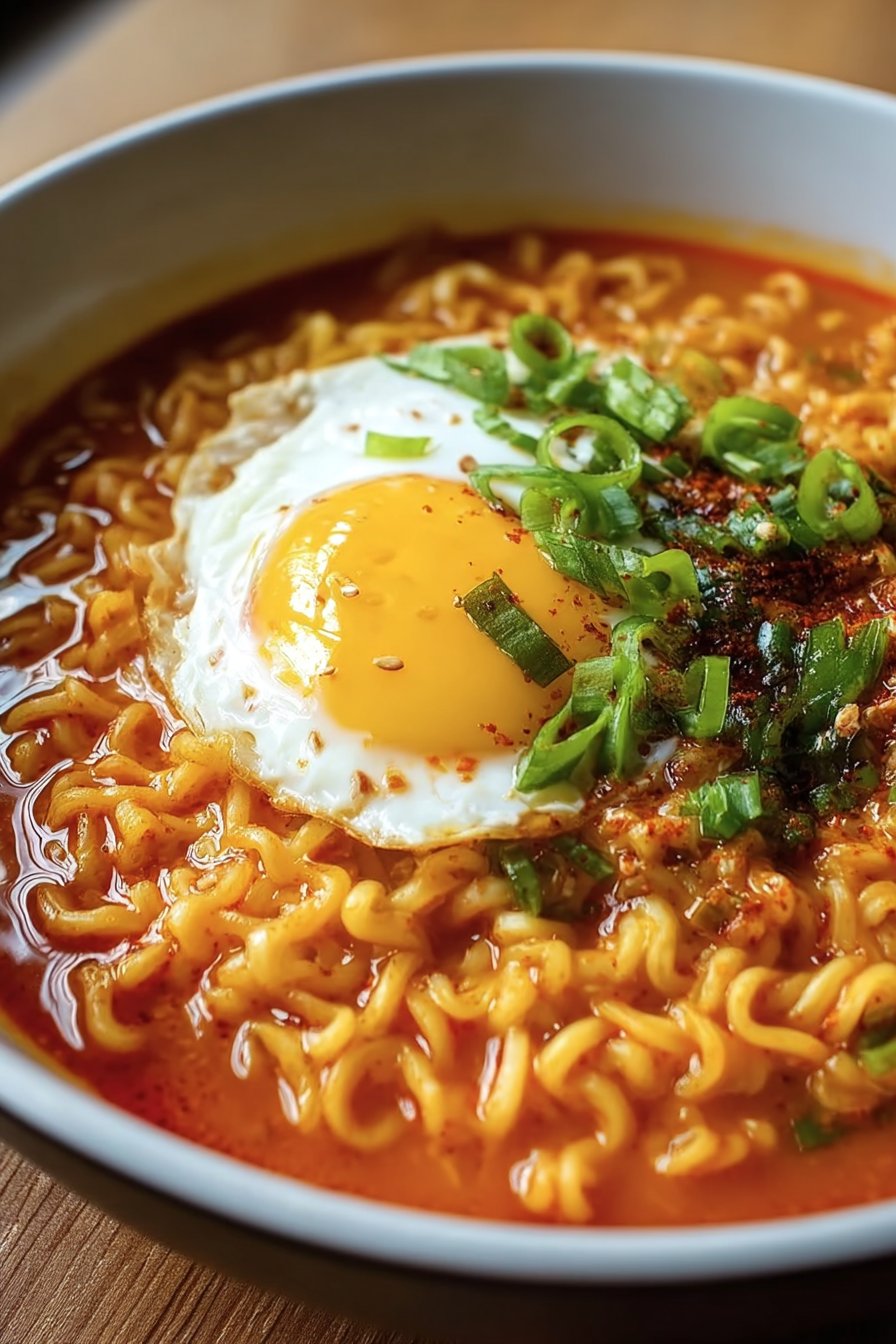
Variations I’ve (Mostly) Loved
- Try tossing in some frozen dumplings—makes it a whole meal. I even added some leftover roast chicken once; not bad.
- One time I tried adding kimchi, and it was amazing. But when I tried with pickled jalapenos… let’s just say, not everything pickled is meant for ramen.
- Sometimes I swap the cheese for a splash of coconut cream for a different kind of creaminess. It’s…interesting?
On Equipment—No Fancy Gear Needed
I usually just use a small saucepan, but if you don’t have one, a deep frying pan works in a pinch (been there). No microwave? Just add everything to the pot and simmer—no stress.
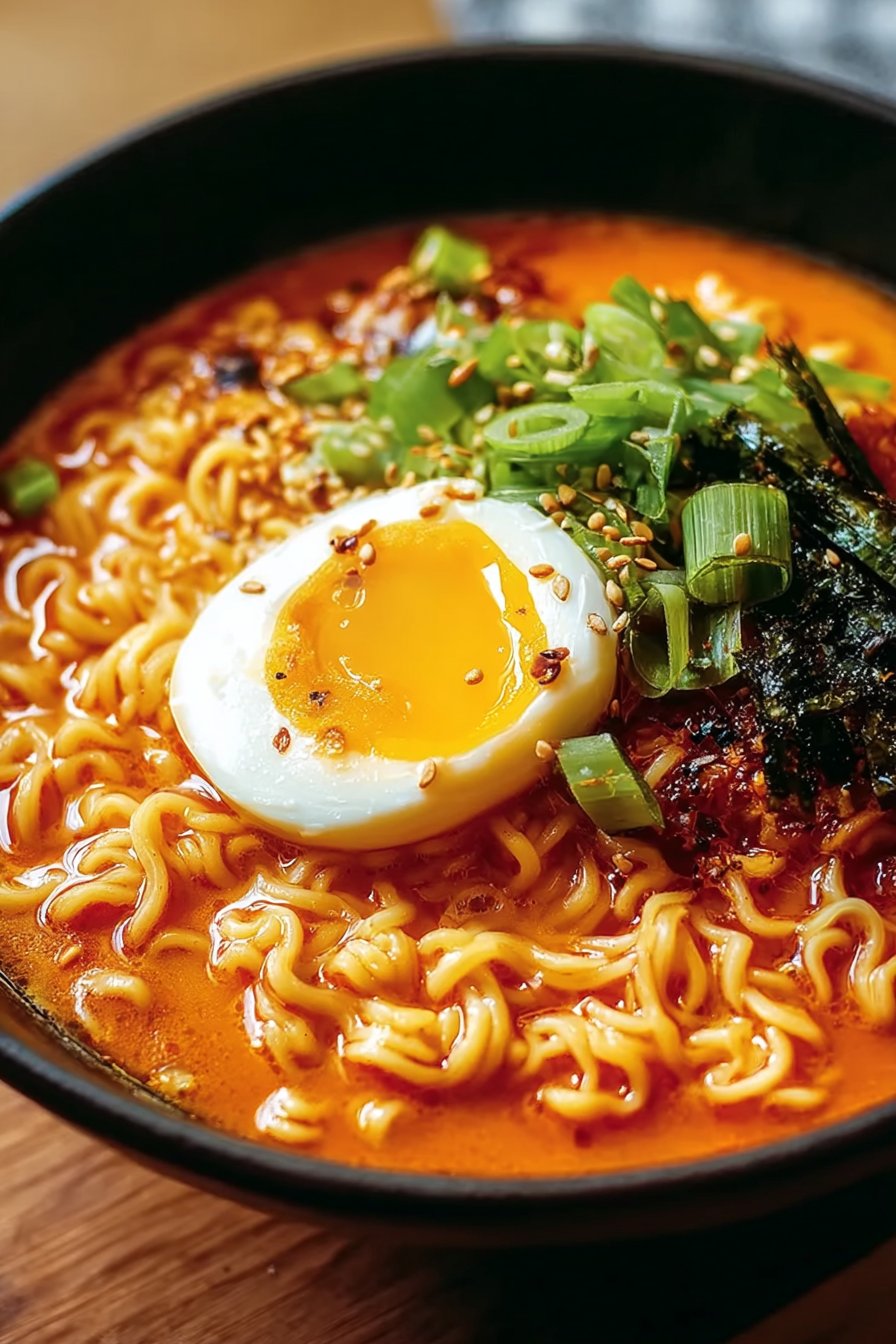
Storing Leftovers (If There Are Any…)
Technically, you can keep this in the fridge for a day or two, tightly covered. The noodles soak up most of the broth, so you might want to add a splash of water when reheating. Honestly, in my house it never lasts more than a day—it just vanishes.
How We Serve It (And Why I Love It This Way)
I love piling on extra green onions and a soft-boiled egg on top. Sometimes I throw on whatever crunchy pickles I have (radishes, carrots, cukes). My cousin insists on eating it with a side of kimchi and a can of Coke—don’t knock it till you try it!
Things I Learned (Mostly the Hard Way)
- I once tried rushing the simmering step, and the milk curdled. Not my proudest moment—just keep the heat gentle after adding milk!
- Don’t skip the sugar, even if it feels weird. It balances the spice.
- If you dump all the cheese in at once, it can get rubbery. Add it gradually and let it melt in peace.
Questions I Keep Getting (So Here’s the Lowdown)
- Can I make this without gochujang? Yeah, sure. It won’t taste quite the same, but a bit of Sriracha or even chili flakes works in a pinch. Not traditional, but who’s judging?
- Is it really spicy? Depends! I’d say medium, but I have a pretty high heat tolerance. Cut back the gochujang if you’re spice-sensitive.
- Can I use regular ramen instead of Korean ramen? Absolutely. The flavor will be milder, but it’s still tasty. Actually, once used those plain bricks form the dollar store in a late-night pinch—turned out fine.
- What if I don’t have cheese? Honestly, just skip it or try a splash of cream. It’ll miss that gooey factor, but still works.
- Where do you get gochujang? Most big supermarkets stock it now, but I usually grab mine online (like H Mart) or from a local Asian grocery. Here’s a homemade gochujang recipe if you’re feeling ambitious!
- Can I double this recipe? Yup! I do it all the time. Just use a bigger pot and don’t wander off or the noodles will glue themselves to the bottom (learned that the hard way…)
And hey, if you end up with leftover cheese or eggs, try making a breakfast fried rice the next day—no waste, right? Anyway, hope you love this Creamy Korean Spicy Ramen as much as I do. Let me know if you swap in anything weird that actually works (or, you know, doesn’t).
Ingredients
- 2 packs instant ramen noodles
- 2 cups chicken broth
- 1 cup whole milk
- 2 tablespoons gochujang (Korean chili paste)
- 1 tablespoon soy sauce
- 1 teaspoon sesame oil
- 2 cloves garlic, minced
- 1/2 cup sliced green onions
- 1/2 cup sliced mushrooms
- 1 boiled egg, halved (optional)
- 1 tablespoon toasted sesame seeds (for garnish)
Instructions
-
1In a medium pot, heat sesame oil over medium heat. Add minced garlic and sliced mushrooms, sauté for 2-3 minutes until fragrant.
-
2Add gochujang and soy sauce to the pot, stirring to combine with the garlic and mushrooms.
-
3Pour in chicken broth and bring to a gentle boil. Add ramen noodles and cook according to package instructions, usually 3-4 minutes.
-
4Reduce heat to low and stir in the milk. Simmer for another 2 minutes until the broth becomes creamy.
-
5Divide noodles and broth into bowls. Top with green onions, boiled egg halves, and toasted sesame seeds. Serve hot.
Approximate Information for One Serving
Nutrition Disclaimers
Number of total servings shown is approximate. Actual number of servings will depend on your preferred portion sizes.
Nutritional values shown are general guidelines and reflect information for 1 serving using the ingredients listed, not including any optional ingredients. Actual macros may vary slightly depending on specific brands and types of ingredients used.
To determine the weight of one serving, prepare the recipe as instructed. Weigh the finished recipe, then divide the weight of the finished recipe (not including the weight of the container the food is in) by the desired number of servings. Result will be the weight of one serving.
Did you make this recipe?
Please consider Pinning it!!

